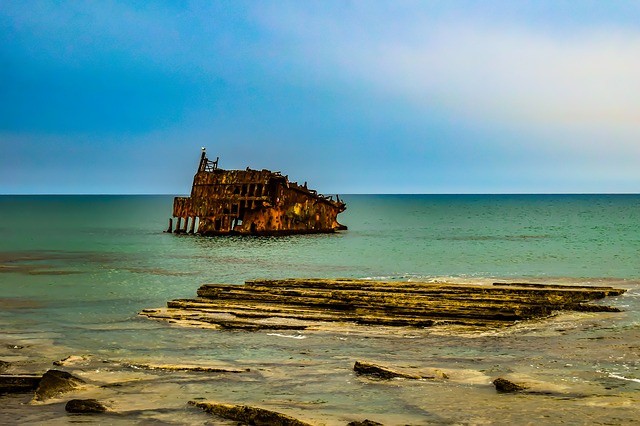
The origin of the shipwreck discovered at Daugavgrīva beach, located in Latvia close to Riga, was thought to be a lost Royal Navy ship. No one knows the source of the wreck definitely until investigated thoroughly.
The estimated age of the wreck is supposed to push back to two hundred years back, whether it is indeed a formerly lost Royal Navy warship that is left to be seen, pending verification.
The locals chanced upon the timbers and beams of the 40-foot wreckage, which was brought to the attention of authorities.
Wreckage recently discovered could have been a Royal Navy ship
When the digging began with the excavators, the unexposed sections of the wreck were measured to be 39-feet long and about 13 feet wide, reported the Daily Mail.
Clues to the origin of the wreckage are so sparse, but some indicators show the hull was copper plated. Approximately two hundred years ago, it was a technique used in royal Navy ships first.
According to Latvian experts, the estimated age of two hundred years to one hundred fifty is just a shot in the dark. That would put it in the middle 1800s. Another is the wood left from its structure that still survived, is from oak used by Britain for shipbuilding.
The Latvian National Cultural Heritage Board stated that they found numerous small nails made from the copper still found on the timber, cited Today UK News.
Speculation of what the ship was came from shipwrecked remains that were copper clad with plates. An educated guess would be that the vessel was either a Royal Navy ship or a seafaring merchant vessel with long-distance travels.
The remains indicate that copper plates are for the ship, suggesting it was either a warship or a long-distance merchant ship that went on very long voyages.
One source said the ship, when still seaworthy, would have traveled to the Baltic and cold Northern Seas, even pushed even as far as the tropical islands.
British shipbuilders used copper plates on the parts of the ship that lay underwater as a technology in the later 18th century, makes the wreck date back to the 19th century.
Design of discovered ship in Latvia gives clues to its origins
One of the excavators remarked that they did not expect to find enough ship remains. Instead, found significant structures intact. During clearing the sand, the ship's wreck just got more extensive, and the group was amazed at what they came across.
One study by the Western Oregon University in 2012 discovered that British sailing vessels had exclusively used oak for the ship structure. In the later 18th century, the consumption of 50,000 Oak trunks was the cost of building ships, the Swift Headline.
The UK used 218,000 loads for the ships and 1,000 long, straight masts from the Baltic. In the same period, one ship of the line would need a total of 4,0000 mature oaks to make a ship of the lime.
At the same time, a single ship-of-the-line required the wood from roughly 4,000 mature oaks for construction.
Freeing the wreck and its remains, the excavators had to laboriously remove about 36-feet by 13-feet of sand to expose it. It was reburied in the sand to keep and preserve the wreck. The origin of shipwrecked remains is not clear yet, but a lost Royal Navy ship is the closest guess for now until a clue emerges.
© 2026 HNGN, All rights reserved. Do not reproduce without permission.








